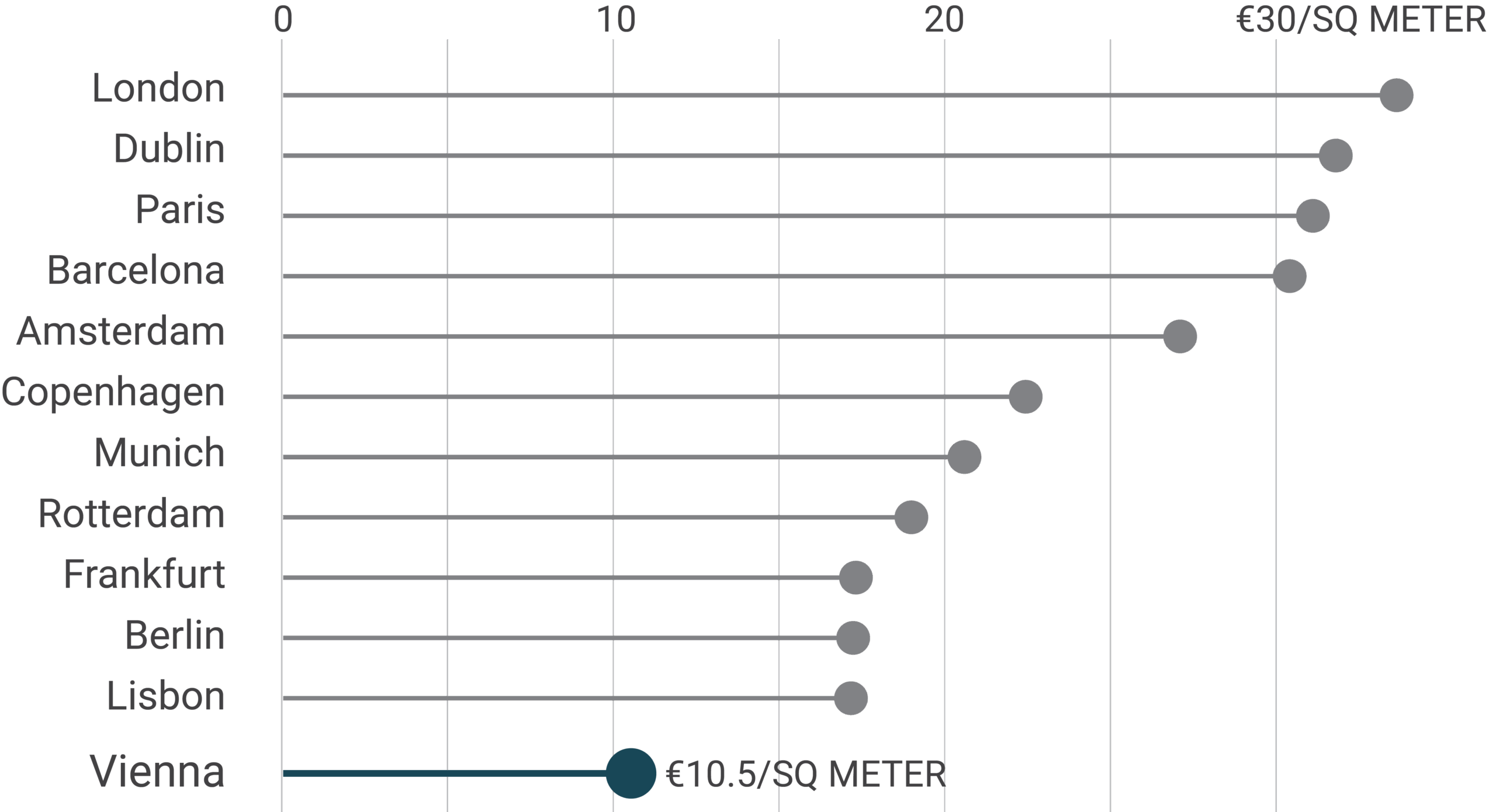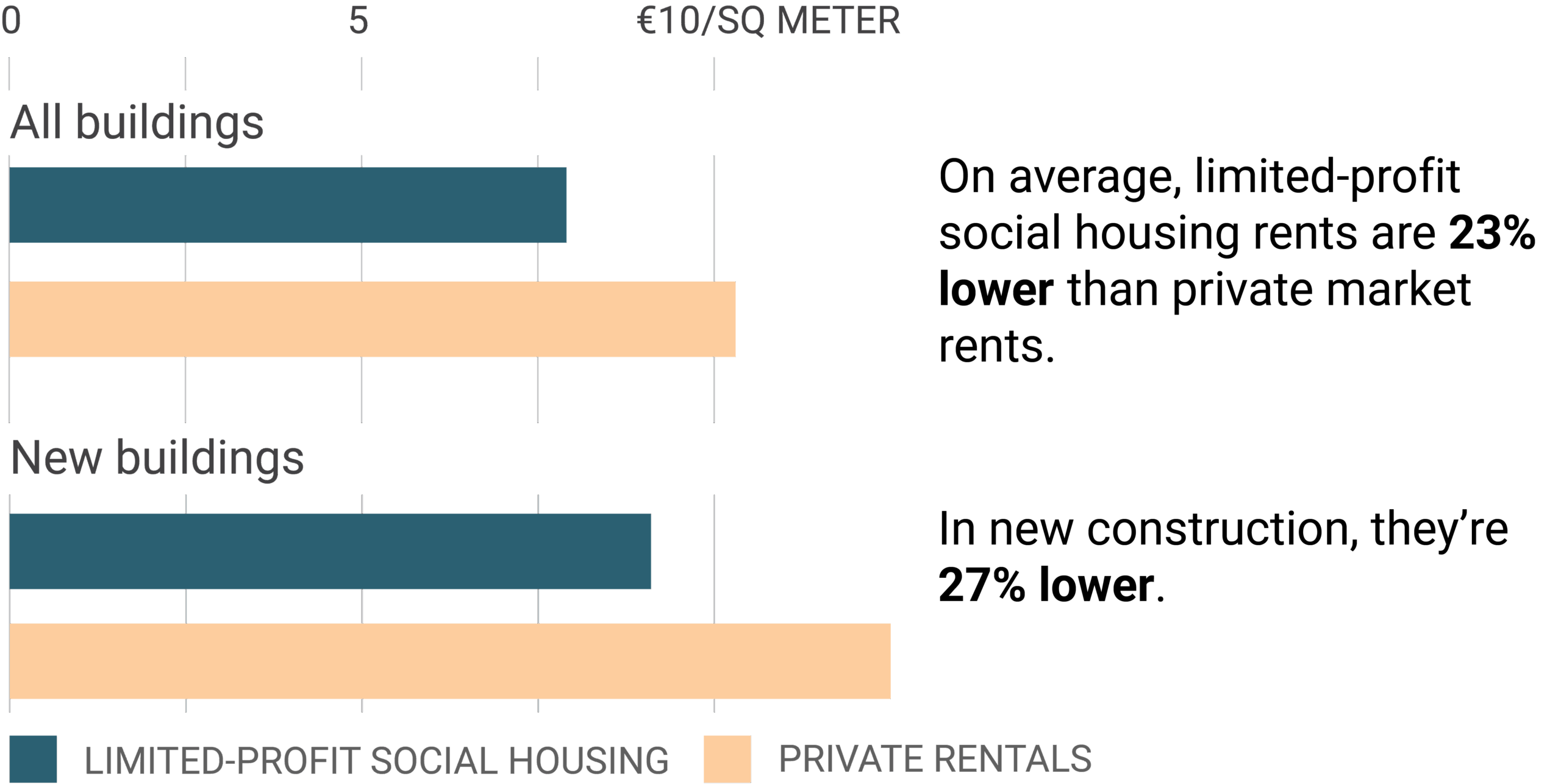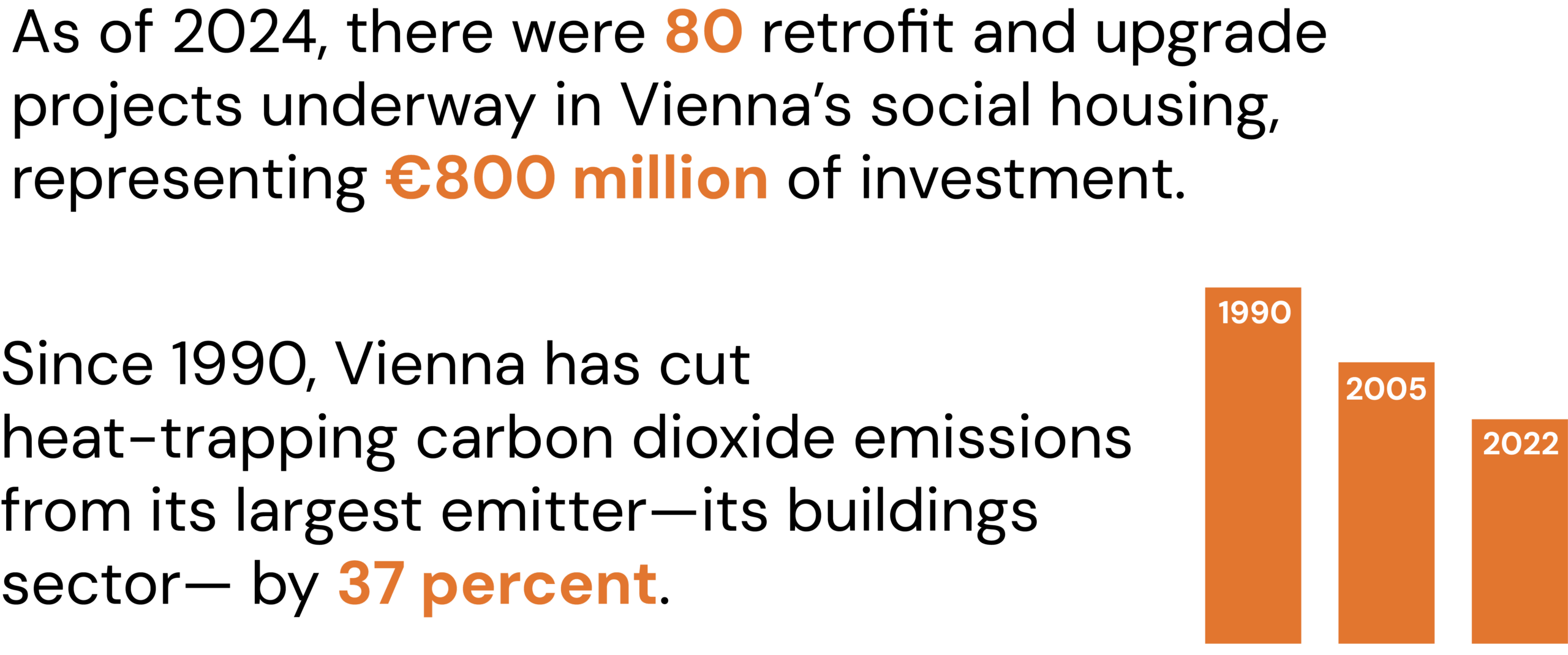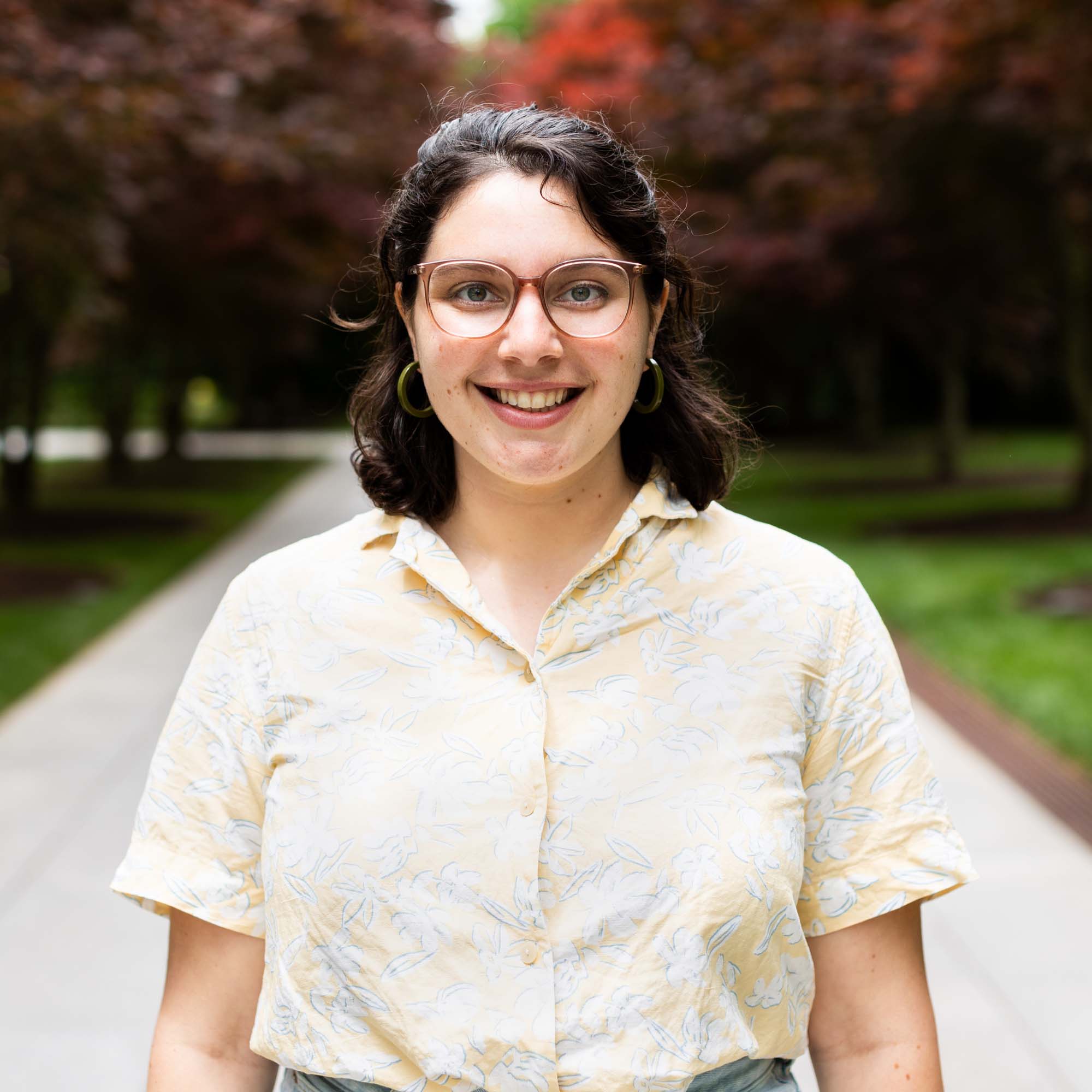Green Social Housing: Lessons from Vienna
Vienna is the global capital of social housing. Over 40 percent of the city’s housing units are social housing, providing homes for the majority of the city’s renters. And, as the city’s population has grown over the past two decades, Vienna has continued to build affordable, beautiful social housing, where doctors live next to janitors and grandparents live down the street from their grandkids. Today, Vienna’s social housing shelters residents from both real estate speculation and climate breakdown.
Our research outlines the key features of Vienna’s green social housing system, and emphasizes its lessons for the US context.
Vienna’s municipal green social housing system provides an example of how, in the context of a conservative national government, states and cities can still take bold action to tackle the housing and climate crises together. Although Vienna’s history and institutions are unique, we believe that US policymakers and practitioners could start achieving similar results right away.
The majority of Vienna’s renters live in the city’s 400,000 units of social housing.


Thanks to its social housing and widespread rent control, housing costs are low for all of Vienna’s 1.6 million renters. In 2023, the average rent per square meter in Vienna was €10.5, while rents in Inner London were over three times as high. No major city in Western Europe has lower rents.
Rents in Vienna are the lowest among all major Western European cities.


Four strengths of Vienna’s green social housing model stand out:
1. Green social housing ensures permanently affordable housing for a range of residents.
Thanks to a large supply of both municipally owned and “limited-profit” social housing and strong rent control regulations, Vienna is able to provide permanently affordable, high-quality homes to households earning a broad mix of incomes.
Vienna’s limited-profit social housing is significantly less expensive than private-market housing.


Vienna has built social housing in every district, and regulates rents across the city. Vienna boasts greater income diversity within neighborhoods—and far less inequality between them—than comparable American cities. Overall, thanks to its social housing and related policies, Vienna’s neighborhoods have a far more equitable distribution of income than, for example, New York’s.
Vienna’s distributed social housing anchors urban equity. Income differences across districts are far smaller than New York City’s.


2. Livable, inclusive, and sustainable communities are created by comprehensive planning and anchored in social housing.
On our research trips to Vienna, we saw cohesive and integrated communities, well-served by public transit and full of parks and recreational infrastructure. The city’s social housing anchors a progressive urban planning regime that has emphasized sustainability, gender equity, low-carbon mobility, and other public goods.
Vienna’s social housing anchors a broader approach to urban planning that prioritizes low-carbon mobility.


3. Green social housing provides a foundation of climate action.
Vienna shows how public ownership and regulation, a strong civil service, and a hefty social housing sector can accelerate climate action. Publicly owned buildings and land provide pilot locations for large-scale green projects, allowing social housing to act as a “role model” and “first mover” for the rest of the city’s building stock. Developer competitions institutionalize these advances, while stringent criteria for sustainability drive new green innovation in the building sector, creating a virtuous cycle of increasingly cleaner construction. And through public ownership of its energy utility, Vienna is installing solar panels across the city, and expanding geothermal energy development, integrating waste heat with large-scale heat pumps, and expanding its district heating network (and district cooling) while powering it with ever-greener energy, all to ensure year-round comfort in the city’s homes.
Vienna’s social housing plays a key role in decarbonization.


4. Durable political alliances sustain green economic populism over time.
The Social Democratic Party kickstarted the city’s social housing boom over a century ago, and voters have rewarded them with victories in every free election since. Thanks to the social housing’s direct, widespread, and literally tangible social uplift, the city has continued building social housing at scale despite neoliberal pressures, and irrespective of national political swings. The continued successes of the Viennese social housing model has also relied on a network of supportive political institutions—labor unions, tenant associations, neighborhood groups, the Chamber of Labor, and the Social Democratic Party. It’s this favorable political context that has allowed Vienna’s housing experts to put their architectural and financial expertise into providing high-quality housing for all.
Vienna’s green social housing: by the numbers
Meet the authors

Daniel Aldana Cohen
Assistant Professor of Sociology, UC Berkeley,
Director of the Socio-Spatial Climate Collaborative, UC Berkeley

Aaryaman “Sunny” Singhal

Ruthy Gourevitch

Gianpaolo Baiocchi
New York University